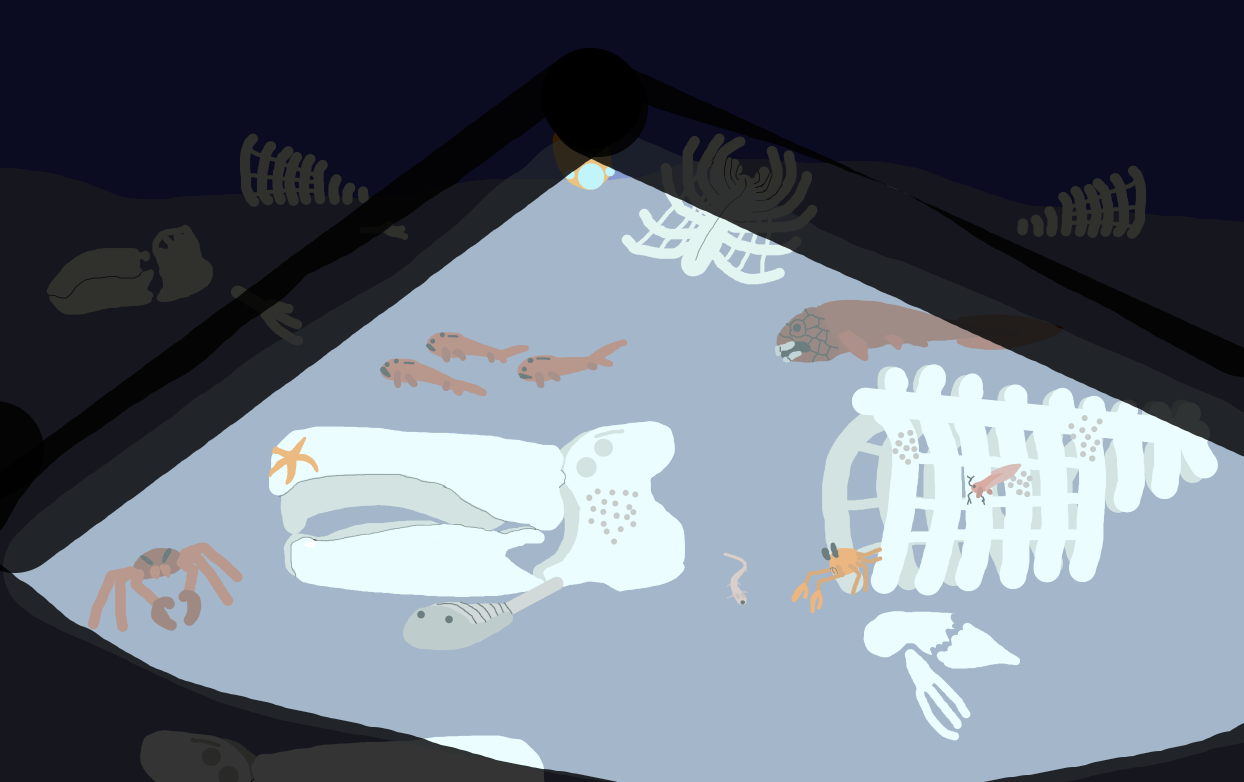HOME | DD
 Animedino321 — Oceanus Graveyard (Outdated)
Animedino321 — Oceanus Graveyard (Outdated)

#aliencreature #alienspecies #boneyard #deepsea #digitaldrawing #fish #planetmars #sizecomparison #whale #hexapods #speculativeevolution #speculativebiology #horshoecrab #speculativezoology #barnacles #crab #dunkleosteus #skeletons #starfish #submarine
Published: 2024-02-18 16:27:25 +0000 UTC; Views: 1459; Favourites: 9; Downloads: 0
Redirect to original
Description
Humanity's first dive into the deep sea of Mars was conducted with a remote controlled submersible that is about the size of a bus. This large submersible was sent down to explore a region where many Oceanus (Oceanusotitan Solicaudia) have been known to gather every few years. When the submersible made it to the seafloor the reason was obvious, hundreds of thousands of skeletal remains were found cluttering the seafloor, an ecosystem made from the bones of giants. Whenever an Oceanus could feel its life coming to a close they seem to come here to finally fall. These falls provide mountains of food for enormous arthropods, certain species of basal Hexapodid ancestors, and many many more. At just one of these titan falls the scientists discovered many species. the largest species of starfish ever discovered, a Poseidon's Crown Starfish (Scalaeasterias Poseidocorona) which can grow to a size comparable to a bus. In the image 2 crustaceans can be seen, the Deep Sea Karkinos (Cancerdeus Aequorvagus) and the Titan Mantis Crab (Canceromantis Grandis). The Deep Sea Karkinos is a relative of Karkinos found in shallower waters, Karkinos are generally bigger than most other crabs. Mantis Crabs can be found in shallow reef environments and are usually small enough to fit in the palm of a humans hand, however deep sea gigantism and massive amounts of nutrients in the water have allowed these creatures to skyrocket in size. A Titan Horshoecrab (Limulus Titanus) scuttles along the detritus encrusted sea bed, these massive animals are able to find carcasses faster than any other species thanks to heightened senses of smell, so many creatures tend to follow them around. Hexapiscids (The ancestors of Hexapodids) are the most abundant animals here besides the arthropods. Some species, like the Tomato Mud-Suckers (Lutusugerus Solanum) inhale detritus exclusively, lacking any teeth to let them tear into Oceanus carcasses, so they usually inhale fallen pieces. many species have converged with worms, and burrow into detritus and carcasses. An example of this is the Blind Phallus (Pallupiscus Caecus) which was humorously named when it was first discovered. One other clade has found success in these depths, the Placoderms. The Crimson Bone-Cruncher (Osteofrangus Ruberscalae) can bite through even the massive bones of Oceanus. While this clade has representatives in most saltwater ecosystems, it is here their largest member is found. However, the largest placoderm to exist is the apex predator of this ecosystem, nicknamed the "Crushing Guardian" the Rusty Jaw-King (Maxillarex Robiginosus) hunts every animal it can find in its environment, and has no predators.Credit for the skeletal designs goes to Shynshylium on discord
























